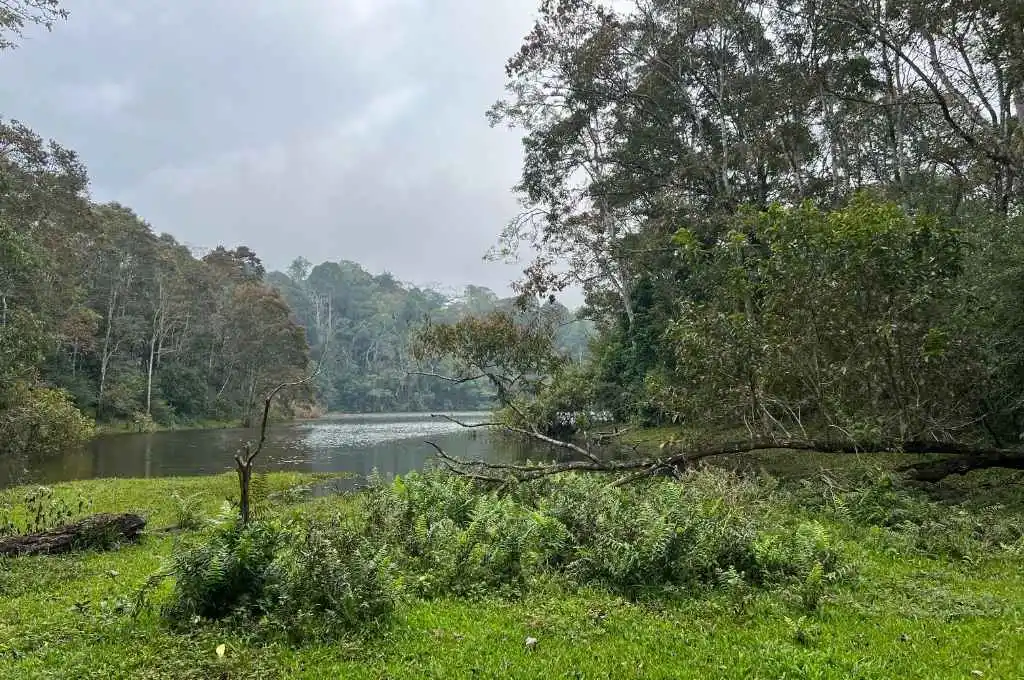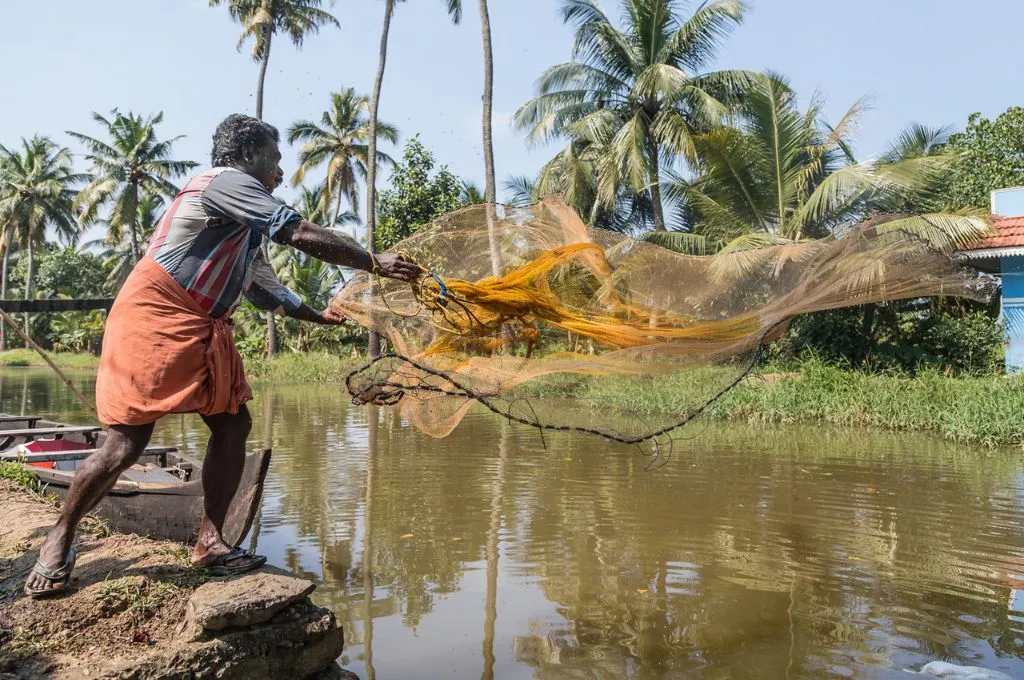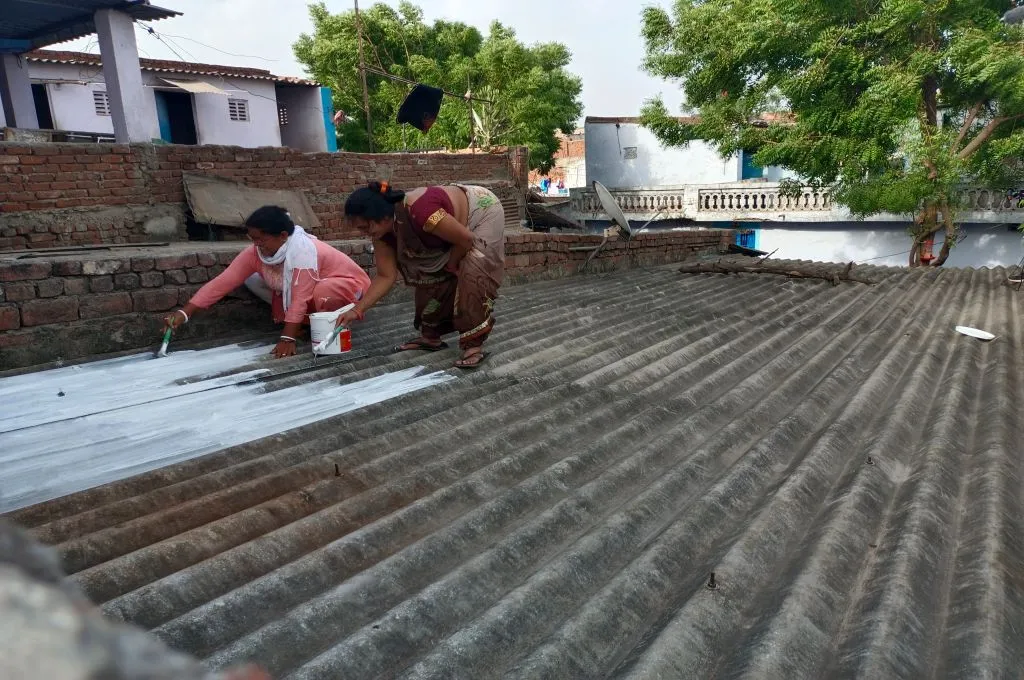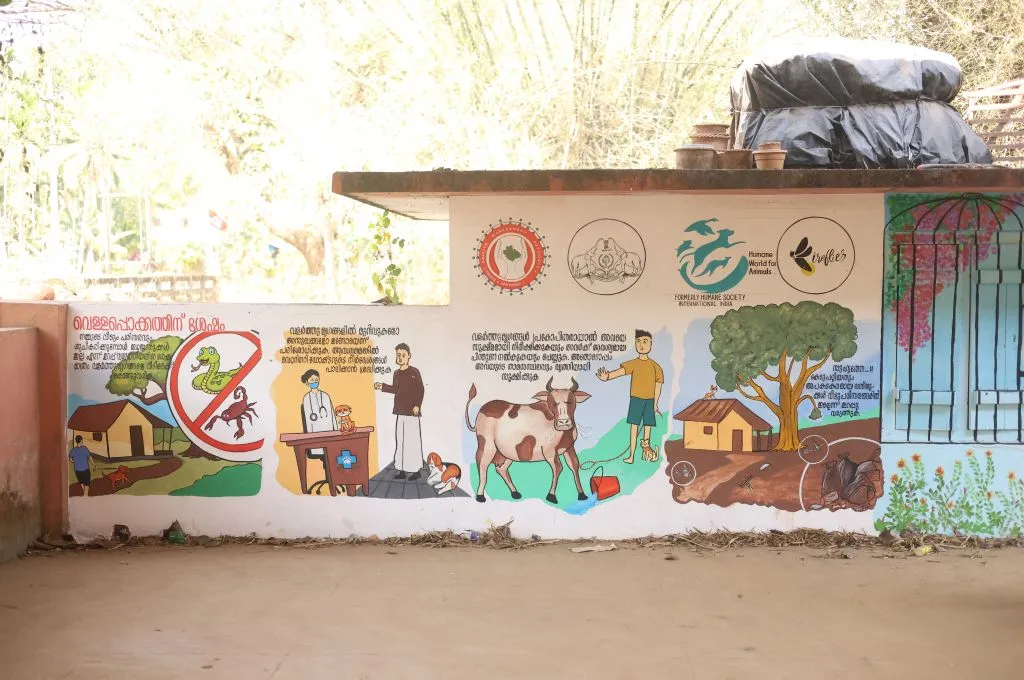Why are we talking about Nature-based Solutions?
The era we live in is sometimes referred to as the Anthropocene because human (anthropos in Greek) activity has had a significant impact on the planet. Our actions have led to the degradation of forests, wetlands, coastlines, polar ice caps, and agricultural land, along with the destruction of habitats, extinction of many species, and loss of biodiversity. By burning fossil fuels such as coal and gas, we are emitting carbon dioxide, and other greenhouse gases, into the atmosphere. This is causing the earth to warm at unprecedented rates and resulting in frequent natural disasters, heatwaves, and insecurity about food and water. Marginalised communities, who contribute the least to the climate crisis, bear the brunt of this because extreme weather events and food, water, and livelihood security affect them most.
What are Nature-based Solutions?
Nature-based Solutions (NbS) are initiatives that respond to the climate crisis by harnessing the power of natural systems such as forests, water bodies, wetlands, or urban green spaces. NbS aim to protect, manage, and restore ecosystems—complexes of living organisms co-existing and interacting with one another—to solve for societal challenges. They encompass a broad range of strategies to reduce flooding; absorb carbon; preserve biodiversity, and provide fresh air, clean water, and sustainable agriculture with an eye on equity and justice for vulnerable communities.
Natural ecosystems can mitigate climate change, such as through forests and mangroves that sequester carbon dioxide and reduce global warming. They also help us adapt to climate change, such as through wetlands that reduce the impact of floods or man-made landscapes such as bioswales and green corridors that reduce temperature. Blue carbon is sequestered by coastal and marine ecosystems, such as mangroves, seagrasses, and salt marshes, and green carbon is stored by terrestrial ecosystems, including forests and other land-based vegetation.

The International Union for the Conservation of Nature (IUCN), a network of governments and civil society organisations, defines NbS as “actions to protect, sustainably use, manage and restore natural or modified ecosystems, which address societal challenges, effectively and adaptively, providing human well-being and biodiversity benefits”. The European Commission has its own definition: “Living solutions inspired by, continuously supported by, and using Nature, designed to address various societal challenges in a resource efficient and adaptable manner and to provide simultaneously economic, social and environmental benefits.”
Both definitions draw attention to the societal goals of ecological action. To qualify as an NbS, a project should not only bring environmental and biodiversity benefits but also aid the welfare of human beings. Research shows that approximately 3.6 billion people are vulnerable to the impact of the climate crisis. Exclusionary NbS actions that disregard the rights of affected communities, especially indigenous and local, perpetuate the alienation of peoples from nature and their land.

How do Nature-based Solutions help?
Preserved and restored ecosystems can mitigate climate change by absorbing carbon dioxide emitted by human activity and slow down global warming. Research indicates that NbS can help us achieve up to 37 percent of the emission reduction that is required to limit global temperature increase to under 2 degrees C. Moreover, NbS can aid resilience and adaptation to climate change by decreasing the impact of natural disasters on vulnerable communities. Greening of cities can reduce the impact of heatwaves and coastal conservation can protect coastal areas from cyclones. Landscape restoration, mangroves, grasslands, riparian restoration, sustainable agriculture, trees, wetlands, green roofs, and green drainage systems can regulate water flows, buffer floods, reduce air and water pollution, cool extreme temperatures, ensure food and nutritional security, improve local livelihoods, and enhance the resilience and adaptive capacities of local communities. Nature-based Solutions can address the climate challenge in a synergetic and cost-effective manner.
What is the history of this concept?
In 1992, member states of the United Nations signed up for an international treaty to address climate change. Currently 197 nations are part of this agreement under the United Nations Framework Convention on Climate Change (UNFCC). The apex body of the UNFCC, known as the Conference of the Parties or COP, meets every year to further its climate objectives. In 2009, when the COP meeting was held in Copenhagen, Denmark, IUCN presented a paper seeking to “make full use of Nature-based Solutions in the post-2012 climate change regime”. The concept of NbS gained currency after this paper. In 2016, IUCN published a formal report that has served as the guide for NbS ever since. It has extrapolated its report into a Global Standard, which lays out what comes under the umbrella term and the benchmarks used to assess NbS projects. Most of the solutions included are previously known concepts that are reframed to integrate environmental and human concerns and provide alternatives to top-down technocratic fixes.
What do Nature-based Solutions look like in practice?
1. Reforestation, afforestation, sustainable forestry
Forests absorb about a third of the carbon dioxide—2.6 billion tonnes—emitted by the burning of fossil fuels each year. In 2006, the Stern Review pointed out that the loss of forests contributed more to global emissions each year than the transport sector.

In 2021, India’s forest cover was 8,09,537 square kilometres, which is 24.62 percent of the country’s total area. To improve its carbon sink, India has pledged to increase this to 33 percent by 2030. Forest cover is increased with afforestation, which involves planting trees in areas that have not been forested, and reforestation, where trees are planted in degraded forests.
Sustainable forestry balances a community’s need for forest products and benefits while keeping the forest healthy for future generations. It often includes community-based forest management, selective logging, and prevention of forest fires.
The Indian government has pursued afforestation and reforestation through schemes such as the National Mission on Green India and the National Afforestation Programme. It has launched a certification scheme for those who use sustainable practices to manage forests and forest products. The Forest Rights Act of 2006 empowers village assemblies to manage forest areas. For example, in Gadchiroli district, Maharashtra, gram sabhas have restored degraded forests and managed them as a sustainable source of tendu leaves.
2. Coastal protection and restoration
The global coastal area accounts for 10 percent of the ocean environment but houses 90 percent of marine species. Coastal habitats can store carbon and counter sea-level rise, coastal erosion, and storm surges. Restoring wetlands, including marshes, swamps, reefs, and mangroves, can protect coastlines.
India’s coastline spans 7,500 kilometres and its erosion affects the lives of 14 percent of its population that lives in coastal districts. According to government data, between 1990 and 2018, 33.6 percent of the country’s coastline underwent varying degrees of erosion.
NbS involves the protection and management of coastal ecosystems and is different from conventional engineering solutions, such as building seawalls. For instance, planting mangroves reduces the impact of storms on human lives and economic assets, and provides a habitat for fish, birds, and other plants. In Gujarat’s Jambusar taluka, the local community has set up a coastal bioshield, which includes mangrove species on the seaside, salt-resistant trees in the middle, and fodder plants closer to the village. A restored wetland in Chennai increases the local community’s flood resilience while improving water supply and quality. In 2023, West Bengal, which is home to 40 percent of our mangrove forests, set up a special cell to monitor and manage them.
3. Sustainable agriculture
Sustainable land and water management are crucial to farmers, who need both for their crops, livestock, and fisheries. Conventional input-intensive agriculture degrades topsoil and groundwater levels. A holistic approach to farming can help us meet current farming needs while preserving natural resources for future generations. Nature-based farming solutions such as crop rotation, agroforestry, cover cropping, and natural farming can improve soil health, increase crop resilience, and reduce greenhouse gas emissions. Reviving traditional water harvesting systems can also enhance water and food security. Integrated watershed management results in soil and water conservation, better productivity, more tree cover, and improved livelihoods.
These practices are crucial in India, where a large number of people are engaged in agriculture. India’s National Mission for Sustainable Agriculture promotes sustainable agriculture such as crop rotation, agroforestry, and natural farming, which are growing in India.
4. Green and blue urban infrastructure
Cities consume 78 percent of the world’s energy and produce more than 60 percent of all greenhouse gases. India is urbanising rapidly and, by 2050, one in every two Indians is expected to be living in a city. We need to reduce the negative environmental impact of urban environments while also helping them adapt to the fallout of a changed climate, for example, heatwaves or storms.
Green–blue infrastructure involves integrating natural elements into urban environments. Blue infrastructure refers to rivers, lakes, canals, ponds, wetlands, floodplains, and water treatment facilities. Green infrastructure includes trees, parks, fields, rain gardens, bioswales, green roofs, and permeable pavements. These can help reduce heat island effect, recharge groundwater, and improve air quality. Urban NbS can vary in scale—building- or plot-level solutions (vertical gardens, green roofs), area or neighbourhood solutions (block plantations, urban parks), and regional solutions (protection and restoration of urban forests, mangroves).
In Mumbai, the state government’s initiative to create a 3.2-acre urban forest aims to address urban heat island effects, with the potential to cool temperatures in the area by up to 3 degrees C (5.4 degrees F).
What are the challenges to Nature-based Solutions?
There are dissenting opinions on the efficacy of Nature-based Solutions. According to some experts, they require a lot of land and/or water. The resources on which NbS projects are created are often inhabited by indigenous peoples, small-scale farmers, or other frontline communities. This perpetuates the structure that exploits marginalised communities. Meanwhile, they point out that the real culprits—gas, coal, and oil extractors—go unpunished.
There is also the challenge of finance. Studies find that while developed countries have the necessary resources to effectively implement NbS, low-income countries receive only a small fraction of investments for them. It is difficult to measure and report the impact of NbS initiatives.
When specific NbS projects are implemented, they should be suited to local, social, and ecological contexts. For instance, using an invasive fast-growing species may damage the native ecosystem and turn it into a monoculture. The projects should also safeguard the local community’s needs and adaptive capacity. Respecting land tenure and forest rights, community participation, and community ownership play a key role in sustaining NbS over the long term.
Saloni Meghani contributed to this article, with inputs from Srishti Kochhar, WRI, and Ashali Bhandari, Transitions Research.
—
Know more
- Read this toolkit on Nature-based solutions in Panaji and other coastal cities.
- Read this interview with Dr Kamal Bawa on why biodiversity science can be crucial for climate action.
- Read this article on why Nature-based solutions can be pivotal in building climate resilient urban spaces.




